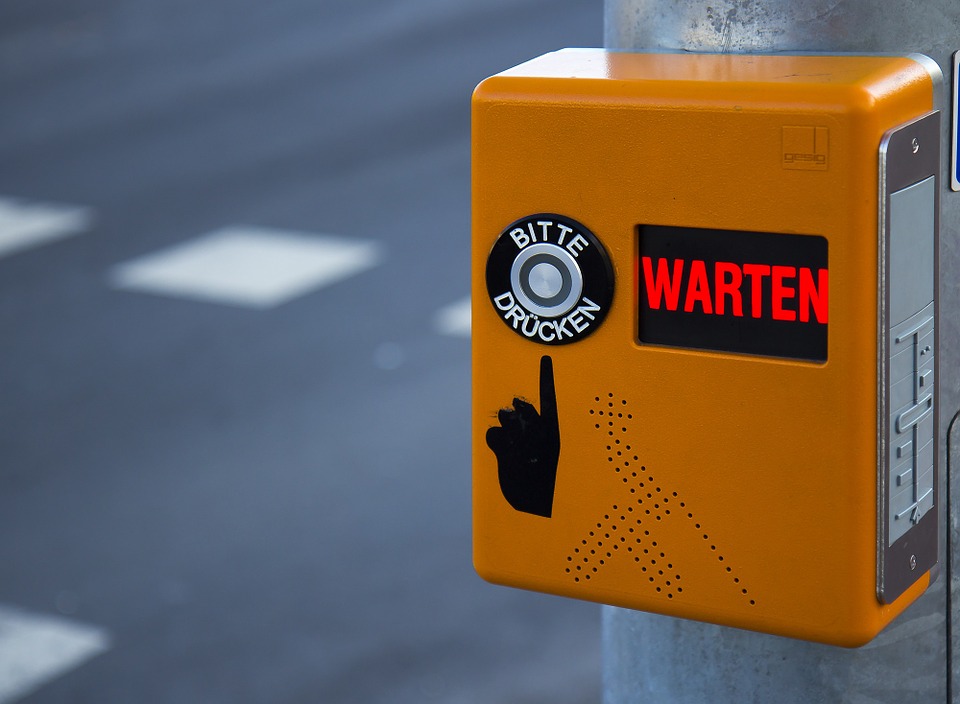Road intersections, such as two-way or four-way road crossings, that are alternatively used by road traffic and pedestrians utilize a variety of conventional approaches to help pedestrians identify when they have the right of way, such as light signals, audible signals, and tactile signals.
For visually impaired pedestrians, audible signals can be used to help identify when they have the right of way. However, at junctions with multiple crossings, it can be difficult to identify the correct audible signal for a target crossing chosen by a visually impaired pedestrian. For example, at a four-way intersection with multiple crossing zones, a visually impaired pedestrian could mistake an audible signal of a nearby crossing as an audible signal for a target crossing chosen by the pedestrian, resulting in confusion and an unsafe crossing condition. Further, they do not offer any way of informing them how much time remains before it is no longer safe to cross.

IBM has developed a self-service crossing aid for visually and hearing impaired pedestrians.
A crossing signal indicates when a pedestrian can safely cross an intersection via a crosswalk. A crossing signal is a freestanding crossing signal that allows pedestrians and road traffic to use crosswalk alternately. According to the patented invention, the crossing signal also includes a tag, a wireless access point (WAP), an embedded crossing program, and a unique ID. The tag is any machine-readable smart tag, sticker, or barcode capable of embedding information for reading by a mobile device, such as mobile device carried by a pedestrian. The tag can also be a Braille-like quick response code (QR code) embedded with unique ID.
The crossing app enables a visually or hearing impaired pedestrian to identify a crossing signal at a crosswalk, by scanning a machine-readable tag located on the crossing signal. Then the crossing app determines a unique ID for the crossing signal and utilizes the unique ID to search for a wireless access point within the crossing signal and notifies a pedestrian when it is safe to use the crosswalk (i.e., when the pedestrian has a right of way) through haptic (i.e., tactile) feedback, such as vibration. Further, the app notifies the pedestrian of a relative amount of time remaining before a right of way expires through increased intensity of haptic feedback relative to a decrease in an amount of time remaining before expiration of the right of way.
Publication number: US 20160180703
Patent Title: SELF-SERVICE CROSSING AID FOR PEDESTRIANS
Publication date: Jun 23, 2016
Filing date: Dec 18, 2014
Inventors: Siao C.L. Chang;
Original Assignee: International Business Machines Corporation

